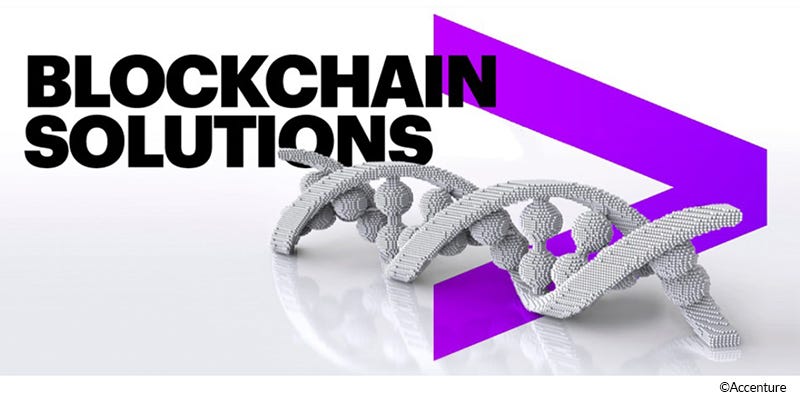Latest news about Bitcoin and all cryptocurrencies. Your daily crypto news habit.
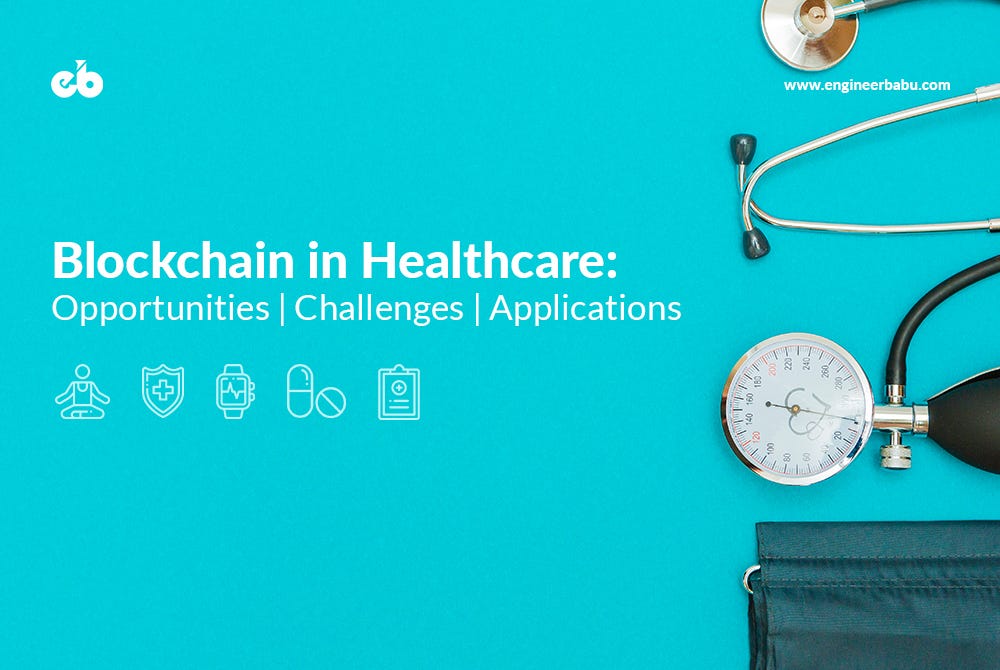 Image Source
Image Source
Growing businesses demand the need to bring revolutionary changes in all the aspects of their businesses as time and technology progress. When it comes to the field of health care, the urgency of growth escalates to higher levels. Quality healthcare services backed up with the latest technology is the need for today. Moreover, the healthcare system landscape is shifting towards a more patient-centric approach which focuses on two major elements namely, affordable treatment and apt healthcare facilities at all times.
Current Healthcare System
Focusing on quality health care services means ensuring patient health management at a superior level at all times. However, federal rules and regulations are making processes even more tedious and lengthy. Due to this, keeping such processes intact and still providing effective patient care is not feasible in many cases. The major issue in providing quality healthcare services is the gap between providers and payers. The dependency of middlemen in the supply chain makes it even worse.
In the healthcare sector, critical patient data and information remains scattered across different departments and systems. Due to this, crucial data is not accessible and handily available in times of need. The existing healthcare ecosystem cannot be considered complete as multiple players in the system do not have a system in place for smooth process management. Moreover, it is also termed as inadequate for handling the exchange of information and requires certain major changes.
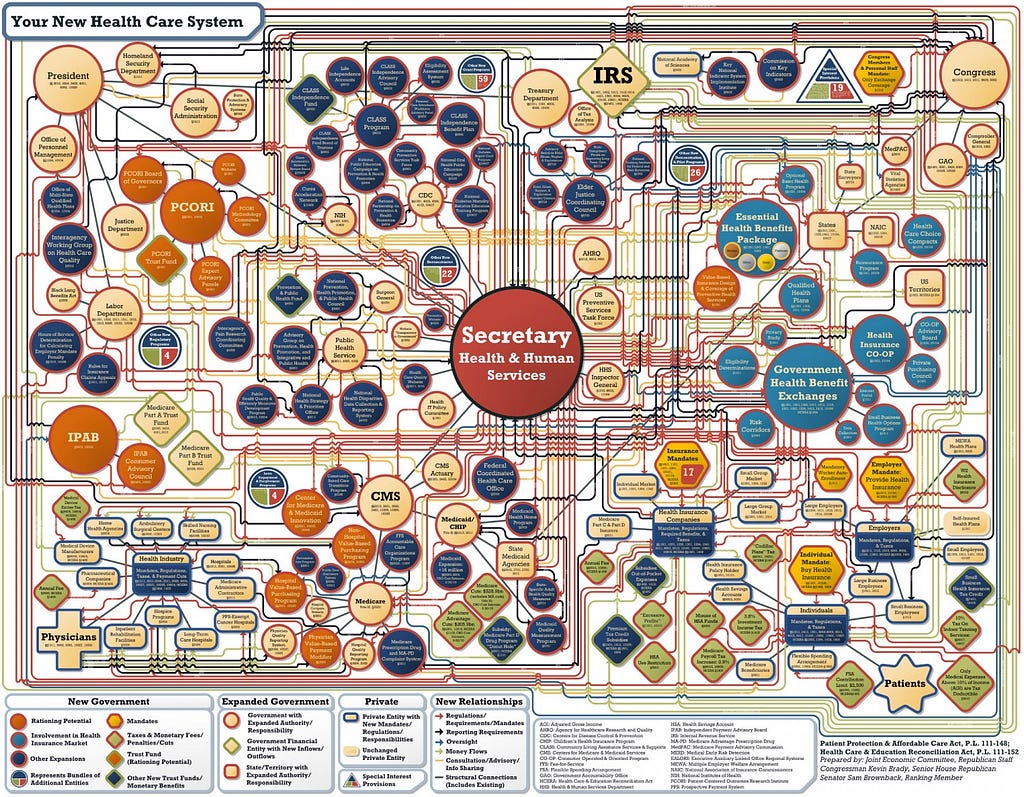
The misuse of available data is preventing healthcare organizations from delivering appropriate patient care and high-quality services for the sake of better health. Despite being fairly efficient in terms of economy, these organizations are not able to fulfill the needs of patients. Following are a few stats from resources that emphasize on this fact:
— Nearly half of clinical trials in the US are unreported
— Up to 40% of healthcare provider data records are filled up with errors or misleading information
— Healthcare data breaches in organizations are estimated to cost around $380 per record in the current times. This amount is expected to increase with the passing of time.
Many healthcare facilities today are still dependent on outdated systems for keeping patient records. These systems hold the functionality of keeping local records of the patient data. This can make it difficult for the doctor to diagnose which is time-consuming for the doctor and tedious for the patients too. Due to this, the cost of maintaining a patient-oriented business is increased considerably.
Issues prevailing in the current healthcare sector are not limited. They keep on growing with high-intensity with time. The need for a technically advanced system is undeniable. Consider the problem of drug counterfeiting which leads to losses of around $200 million. It could be diminished dramatically if a system with accurate tracking features is put into place in the supply chain.
Another time-consuming and tedious process that results in high costs in the healthcare industry is Health Information Exchange. Since patients don’t have any control over their data, the chances of identity thefts, financial data crimes and spamming are increasing every day.
Despite having gadgets like computers and mobile phones at every healthcare facility these days, we’re still not able to collect, analyze, secure and exchange data seamlessly. Therefore, the healthcare system today not only needs an advance system rather it also needs a system that is smooth, transparent, economically efficient and easily operable.
Blockchain Solution
According to the Gartner Hype Cycle, the Blockchain technology has gone beyond the “innovation trigger” and is at “peak of inflated expectations.” It holds the potential to disrupt different industries such as finance, banking, supply chain as well as healthcare. But before diving right into the details of how blockchain is affecting healthcare, let’s understand what is it first.
Blockchain is one of the most disruptive technologies that has taken the world by storm these days. A blockchain is nothing but a distributed ledger that keeps track of transactions and activities happening throughout the network. The most unique factor of a blockchain is that once a piece of information is added to the distributed ledger, no one can alter it. The information stored on a blockchain is absolutely secure in its entirety. In order for anyone to make a change in one block, it is mandatory to make changes to all the subsequent blocks after it.
The working of a blockchain relies on three major principles that have existed for long. Compiled working of these principles allows blockchain to provide secure and safe digital relationships.
- Private key cryptography — In private key cryptography, a secret key is used as a variable along with an algorithm to encrypt and decrypt the code. The key is kept secret even when the algorithm is not. In a blockchain, a reference of the secure digital identity is created, however, the transactions are on the open network.
- Distributed ledgers — A distributed ledger also known as a shared ledger is referred to as a consensus of shared records. In DLT, the ledger is updated in real time and no central authority is held responsible to maintain the ledger. Instead, network participants keep the ledger updated. Any changes made in the ledgers are reflected within seconds.
- Authentication — Authentication is a process that proves genuineness. In a Blockchain, all the transactions are authenticated before getting added to the chain. This process takes place through algorithms that validate and verify all the transactions. Once the information is encrypted and digitally signed and stored, the authenticity is sealed.
Healthcare firms, technology innovators and the members of overall healthcare sector are looking out for ways to find out what’s possible in the current times and what blockchain could do to make healthcare better and affordable in the future.
Blockchain Panacea for Healthcare Problems
Blockchain has the power to bring out a massive breakthrough in the healthcare ecosystem as it can easily bring specific changes in the healthcare management of the patient. With the aid of this technology, the power will come back to people’s hands. Meaning that individuals will be responsible for handling their own records thus, getting the overall control of their own data.
The technology holds the ability to successfully improve patient care quality while maintaining the funds at a reasonable rate. All the challenges and hindrances that occur in multiple level authentication can be eliminated through blockchain. With the increasing adoption rate, Blockchain has made its way to the healthcare sector. Even in its beginning stage, the technology is being positively accepted by people in the healthcare ecosystem.
According to a study conducted by IBM, around 16% of healthcare executives are determined about their plans to implement blockchain solution in their work this year, while around 56% expected to adopt blockchain by the year 2020.
The comprehensive vision for blockchain to disrupt the healthcare sector in the coming times would be to resolve issues that afflict the current system. Imagine a healthcare system where all the information is easily accessible by doctors, patients and pharmacists at any given time. Blockchain allows the creation and sharing of a single common database of health information.
This system would be accessible by all the entities involved in the process no matter which electronic medical system they use. This offers higher security and transparency while allowing doctors find more time to spend on patient care and their treatment. Moreover, it will also enable better sharing of statistics of researches which, in turn, would facilitate clinical trials and treatment therapies for any rare disease.
In a healthcare system, smooth data sharing between healthcare solution providers can lead to accuracy in diagnosis, effective treatments, and cost-effective ecosystem. The day-to-day growth of patient data requires proper utilization of resources in order to make the most effective utilization of the insights discovered through it.

Blockchain for healthcare allows multiple entities of the healthcare ecosystem to stay in sync and share data on a commonly distributed ledger. With such a system in place, the participants can share and keep a track of their data and other activities happening in the system without having to look out for additional options for integrity and security. As per the requirements and access permissions for the network participants, two types of blockchains can be used:
Permissioned Blockchains
These type of blockchains, as the name suggests allow real-time data to be shared between the participants of the network only on a permissioned basis. A permissioned blockchain is a closed network where all the participants involved in the system have access to the network. It is built and used inside organizations and enterprises in order to exchange information and make transactions securely. Once a transaction is processed through consensus, it will be treated as a permanent record and get added as a new block to the existing blockchain.
Permissionless Blockchains
Permissionless blockchains provide access to anybody for creating an address of their own and begin interacting with the network. One of the most popular examples of a permissionless system is the internet which allows anyone to create their own website. Similarly, in a permissionless blockchain, anyone on the network can interact with other participants on the same network by creating their address on the network.
Among the two of these, private or permissioned blockchains can be effectively used in healthcare in order to make the right decisions within the healthcare ecosystem. The use of Blockchain technology in healthcare holds a lot of potentials as it is being explored further. Holding properties like immutability, trustlessness, and decentralization, the distributed technology of blockchain provides the healthcare sector with opportunities to detect fraud, reduce operational costs, smoothen processes, remove duplication of work and apply transparency in the healthcare ecosystem.
Frost & Sullivan research for Blockchain Technology in Global Healthcare, 2017–2025 states that- “Blockchain technology may not be the panacea for healthcare industry challenges, but it holds the potential to save billions of dollars by optimizing current workflows and disintermediating some high-cost gatekeepers.”
Blockchain Applications for Healthcare
Having explored the importance of blockchain technology in the healthcare sector along with the changes that it could bring, here are a few use cases that utilize the potential of the technology and could make the healthcare industry more accessible, secure and reliable.
Population Health Data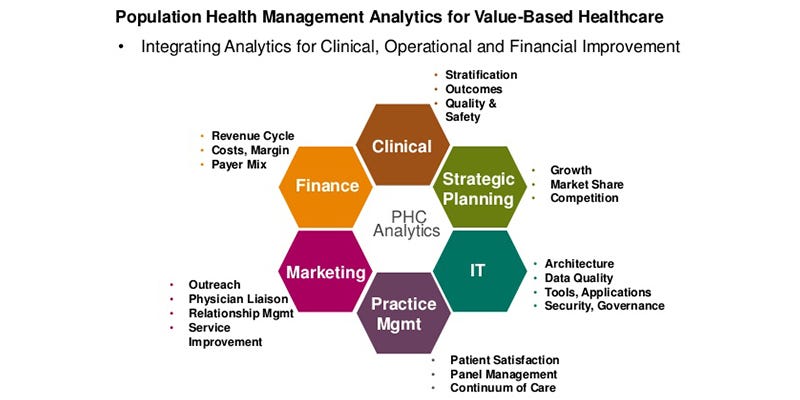
Population health data refers to the medical information of a particular demographic. For example, it may be health risk information for women suffering from thyroid in the group of 25–40 years. To understand the risks across a diverse population, the data is usually provided in an anonymized form and no names are revealed in these cases.
When it comes to population health management, the largest challenges faced till date are data security, shareability, and interoperability. If the patient information is isolated and stored on multiple systems that do not allow the smooth exchange of information, the population health data sets across various patient sets would become scarce. Blockchain provides a reliable solution to this specific challenge. When applied correctly, blockchain will allow improved Security, data sharing, interoperability, data integrity and Real-time update and access.
Using blockchain technology can allow people to participate in population health studies to and monetize their data in the form of tokens. Moreover, better data and sharing of population health data can improve care delivery across diverse populations. With more data sets, the usage of new technologies like AI and ML would be possible which will result in discovering widespread risks of population health.
Secure Healthcare Setups
The current healthcare system and organizations operate through one single central database. This database is managed by one entity in the organization. With this approach, the point of failure also comes to one single point. In such cases, if a hacker or anti-social element attacks the system, he/she can access the overall database and would put the patients as well as the organization in jeopardy.
Blockchain can be utilized in order to prevent the internal infrastructure of an organization. A large organization with multiple independent actors having different levels of access on a blockchain ledger with encryption embedded within the blocks will save organizations from external threats and attacks. If a blockchain network is implemented correctly in a healthcare organization, it would prevent such ransom attacks as well as other issues like data corruption or hardware failure.
Patient Payments Through Cryptocurrencies
Another appealing benefit of Blockchain in healthcare is the use of cryptocurrencies as payments in place of cash or fiat money. Cash medical practices are in prevalence however, the health care costs are not defined as such. Even today 5–10% of cases come from fraud in terms of money and billing unperformed services. In the US alone, a fraud of $30 million was detected in the year 2016.
Through blockchain systems and applications in place, the possibility of providing the right solutions and eliminating frauds has increased. Bill processing automation will remove the third parties from the chain and decrease the overall administrative costs. Moreover, when larger institutions will adopt payment processing through cryptocurrencies, a major shift would take place. Each penny paid to the Medicare would be tracked and ensure that no frauds are made during the process.
Drug Traceability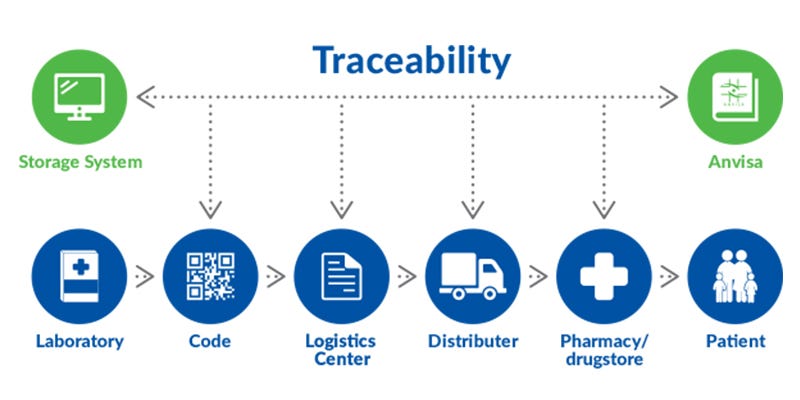
Counterfeiting of drugs along with fake drugs in the supply chain constitutes a major loss of billions of dollars per year. According to a Health Research Funding Organization (HRFO), report, almost 10 to 30 percent of drugs in developing countries are not original. While the U.S. healthcare industry alone bears a loss of approximately $200 billion annually due to these issues. As these stats showcase, drug counterfeiting causes deaths of hundreds of people who take the wrong medicine. Dissemination of counterfeit drugs is one serious problem in the pharmaceutical space.
The main feature of blockchain technology that can be utilized in drug traceability is its security. Every new transaction which is added to a block will be immutable as well as timestamped. This will make it easy to track a product and ensure that the information inside the block cannot be altered. In order to ensure the traceability and authenticity of medical drugs, pharmaceutical companies that register any specific drug on the blockchain need to be trustworthy. Therefore, the usage of private blockchains in which the control is in the hands of a central authority would make sense in such cases. When such companies are given access to the specific drug blockchain, they would have a proof that the drugs manufactured by them are authentic.
In such private drug blockchains, the pharmaceutical companies have the right to choose among actors of the supply chain who will be acting as miners be it, manufacturers, distributors or retailers. As authorized according to the position on the supply chain, every individual can have different rights or accessibility options. For example, while labs can register drugs, the wholesalers have the permission to verify transactions. Moreover, every block containing the drug information will have a hash attached to it which will be linked to another block. When the drug moves along the supply chain among different entities, it can be easily tracked.
Moreover, the feature of data transparency in a blockchain system can help to find the complete path of origin, thus, helping in eradicating the circulation of fake drugs.
Clinical Trials & Data Security
Clinical trials are conducted in order to ensure and analyze the effectiveness of any particular medicine that is developed and proposed for curing a specific disease. Based on a hypothesis, the proposed drugs can be tested and based on the success of the trial, they can be implemented on a larger scale. Therefore, in order to conduct a clinical trial, huge amounts of data sets are required. The researchers focus on these data sets and conduct regular tests under different circumstances to generate reports, statistics, and effectiveness ratio. Based on these reports, the data is analyzed and further decisions are taken.
In many cases, however, most of the pharmaceutical companies today show interest in recording the results that can assure certain benefits for their firms. In such cases, the researchers often hide or modify their collected data and information in order to change the outcome.
In order to make the clinical trials more fair and transparent, researchers can make use of blockchain technology which could help to record secure, unbiased and transparent clinical trials.
On the other hand, for the companies who believe in conducting authentic clinical trials, everything needs to be secure and transparent. To accomplish this, the documents created and used in the process such as informed consent, research plans, regulations and study protocol need to be time stamped. This means that the documents should have a proof and details of their creation time. For pre-planned endpoints, it is especially important to keep this information timestamped to create a proof that showcases that the agreement was there even before the trial started.
Blockchain technology would add to the credibility of clinical trials and results. These documents can be stored as smart contracts on the blockchain acting as the digital thumbprints. This catalog of documents will reduce audit costs, review of files, lost document issues and frauds. The blockchain will also keep the supply chain management of the pharma as well as the accountability of drugs tracking.
Patient Data Management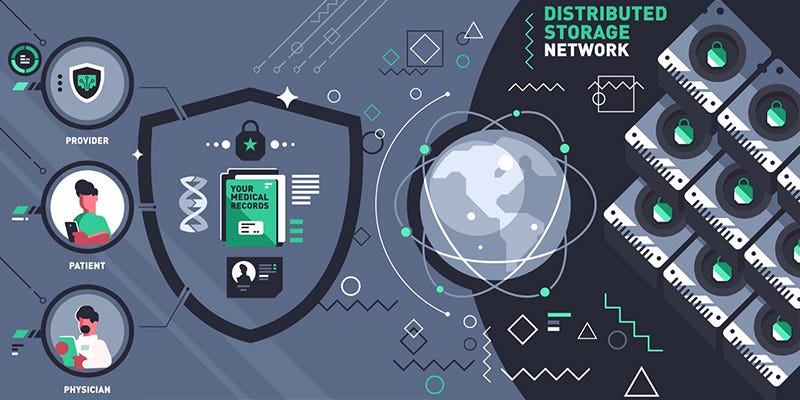
HIPPA, Health Insurance Portability, and Accountability Act has strict regulations around the privacy of a patient’s data. It requires PHI (Patient health information) to be secure from breaches and modification. Despite the security regulations, patient data cannot be restricted. Healthcare being a complex system with multiple entities requires a patient to share their data and medical records across the ecosystem.
For instance, the patients have to share their health-related information with the doctor as well as the providers while going for a treatment or merely buying medicines. Additionally, the increase in the number of patients has resulted in more and more data management by the healthcare providers. This growing data leads to difficulties in managing patient information within hospitals and clinics.
Introducing blockchain to this data-centric system resolves many issues. A blockchain system in place for patient data management would create a hash for individual patient health information blocks and a collective system would constitute a patient ID on a theoretical basis. A blockchain system would even allow patients to reveal their necessary data to third parties while keeping their identity secret. The time limit and access permissions for data sharing with third parties could also be controlled by the patients.
Conclusion
Potential of blockchain for healthcare highly depends on the acceptance of the new technology within the healthcare ecosystem in order to create technical infrastructure. Though there are certain concerns and speculations regarding Blockchain’s integration with current healthcare systems and its cultural adoption, the technology is still popular in the healthcare sector.
It has taken the healthcare industry by storm over the past year and many solutions are being developed to adopt it. With so many potential use cases and possibilities, blockchain is sure to disrupt the healthcare landscape for good.
Blockchain in Healthcare: Opportunities, Challenges, and Applications was originally published in Hacker Noon on Medium, where people are continuing the conversation by highlighting and responding to this story.
Disclaimer
The views and opinions expressed in this article are solely those of the authors and do not reflect the views of Bitcoin Insider. Every investment and trading move involves risk - this is especially true for cryptocurrencies given their volatility. We strongly advise our readers to conduct their own research when making a decision.
